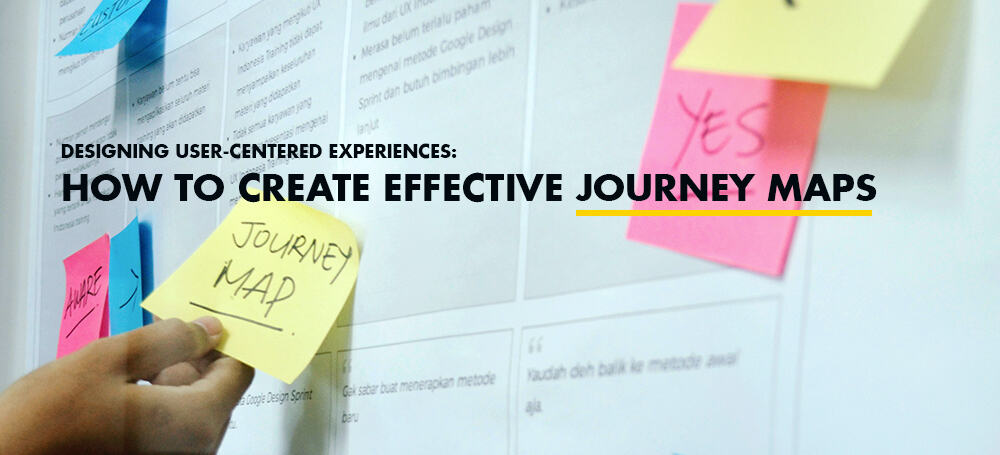

Designing User-Centered Experiences: How to Create Effective Journey Map
User journey map is a visual representation of the path that a customer takes.
As technology evolves, customers are becoming more demanding and discerning when it comes to their online experience. Creating a seamless and engaging user journey is no longer optional; it is essential for business success. One powerful tool to achieve this is a user journey map. A user journey map is a visual representation of the path that a customer takes when interacting with a product or service, highlighting their experiences and emotions at each stage. It enables businesses to gain valuable insights into customer behavior, paint a clear picture of their needs and pain points, and identify opportunities for improvement.
However, creating a user journey map that effectively captures customer feedback can be a complex process. This is where the importance of creating actionable user journey maps comes into play. An actionable user journey map is one that can guide teams through the planning and execution stages of a project, enabling them to make informed decisions and prioritize the most critical customer touchpoints. In this blog post, we will explore the best practices for creating actionable user journey maps, including
1. Understand the user’s goals and objectives
When creating a user journey map, it is essential to understand the user’s goals and objectives in order to create an actionable and effective map. This step is critical in understanding the user experience (UX) of the product/service and to design an experience that addresses the user’s needs. If you don’t understand the user’s goals and objectives, you risk creating a user journey map that is irrelevant or unhelpful to the user. Understanding the user’s goals and objectives not only helps in shaping the user journey map but also allows you to identify opportunities to add value to the user’s experience. By creating a user journey map that aligns with the user’s goals and objectives, you can ensure that the product/service is designed with the user in mind and meets their needs.
2. Identify the user touchpoints and their context
When creating actionable user journey maps, identifying the user touchpoints and their context is a critical step in designing a successful user experience (UX). User touchpoints refer to every interaction between the user and the company or product, from the first point of contact to the final outcome. Understanding these touchpoints is crucial because they allow us to create a deep understanding of how users behave and how they depend on the UX provided by a product or service. By mapping out these interactions and identifying any pain points or areas of improvement, we can better design an experience that meets the needs of our users. Furthermore, understanding the context of these touchpoints is equally crucial to ensure that we are capturing the user’s true experience with the product, including elements such as time, location, and device used. By taking these steps and creating a comprehensive user journey map, we can ensure that our UX design is informed, practical, and user-centered.
3. Document the user’s journey in detail
Creating a user journey map is an essential step towards enhancing the user experience of your product or service. One of the core components of creating an actionable user journey map is documenting the user’s journey in detail. This step helps you identify pain points, areas of customer delight, and opportunities for optimization. User journey mapping also enables you to see things from the customer’s perspective and understand how they interact with your product or service. By documenting the user journey in detail, you can uncover what motivates the user at each stage, the potential barriers or obstacles they may face, and how their needs and goals evolve over time. It enables you to create a more comprehensive picture of the user’s experience, allowing you to make better data-driven decisions and effectively designing the user experience (UX) to meet their needs.
4. Organize user journey maps into a logical structure
When creating user journey maps, it is essential to organize them into a logical structure to facilitate better understanding and analysis of the user experience (UX). Most user journey maps tend to be complex, with several touchpoints and stages involved. As such, it’s crucial to create a hierarchy of information to organize these touchpoints and phases in a logical structure. This way, you can easily identify the different stages and the touchpoints that occur within each. Organizing the user journey maps allows you to focus on the crucial stages, uncovering user pain points, and identifying areas that require improvement. In short, creating a logical structure not only improves comprehension but also facilitates the creation of actionable insights from the user journey.
5. Use user journey maps to inform product decisions
User journey maps can be a valuable tool for informing product decisions and improving overall user experience (UX). A user journey map outlines the steps a user takes to complete a task, and identifies the touchpoints and pain points along the way. Creating a user journey map requires research and analysis of user behavior and preferences, allowing businesses to understand how users interact with their products or services. By using user journey maps to inform product decisions, businesses can identify areas for improvement in their products or services, and optimize the user experience to increase satisfaction and loyalty. It’s important to note that creating actionable user journey maps requires a thorough understanding of UX principles, as well as an understanding of the target audience and their needs, preferences, and behaviors.
In conclusion, creating actionable user journey maps can help businesses understand their users better and provide better customer experiences. By following the steps outlined in this post, businesses can create user journey maps that are visually appealing, comprehensive and accurate. Don’t forget to validate assumptions through research and analytics to ensure that your user journey maps are based on data and not speculation. Utilizing user journey maps can lead to improved customer satisfaction, loyalty and ultimately, increased revenue for your business.

